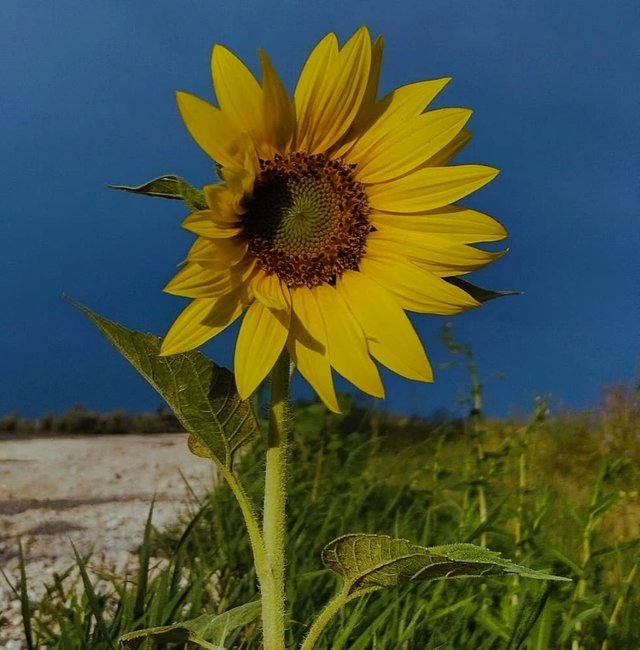Yellow Colour Common Sunflower
The Common Sunflower: Nature's Golden Giant
The Common Sunflower, scientifically known as Helianthus annuus, is one of the most iconic and beloved plants in the world. With its radiant golden-yellow petals, towering stalks, and sun-chasing behavior, this plant has captured the imagination of cultures for centuries. Beyond its beauty, the sunflower holds profound ecological, agricultural, and cultural significance.
Botanical Overview
The Common Sunflower belongs to the Asteraceae family, which includes daisies, asters, and other composites. It is an annual plant, completing its entire life cycle within a single growing season. Native to North America, it thrives in sunny, open environments, often growing in fields, roadsides, and cultivated farmlands.
Key botanical features include:
Height: Can grow from 1.5 to over 3 meters tall.
Stem: Thick, rough, and hairy, designed to support the large flower heads.
Leaves: Broad, ovate, and coarsely toothed, arranged alternately along the stem.
Flower Head: Composed of a central disc of tiny tubular disc florets surrounded by bright, showy ray florets.
The Sunflower's Relationship with the Sun: Heliotropism
One of the most fascinating traits of young sunflowers is their heliotropic movement. During the bud stage, sunflower heads follow the sun’s path from east to west during the day, a phenomenon driven by circadian rhythms and differential growth rates on the stem's sides. This solar tracking stops once the flower matures, after which it permanently faces east. This eastward orientation helps attract more pollinators by warming the flower earlier in the day.
Ecological Importance
Sunflowers play a significant role in supporting biodiversity:
Pollinators: Bees, butterflies, and other insects are highly attracted to sunflower heads, which can produce abundant nectar and pollen.
Birds & Wildlife: Once seeds mature, birds such as finches and squirrels feast on the protein-rich seeds.
Soil Health: Sunflowers are sometimes used in phytoremediation to extract heavy metals from contaminated soils, thanks to their ability to absorb toxins.
Agricultural & Economic Significance
Sunflowers are cultivated globally, not just for their aesthetic value but also for their economic importance:
Sunflower Seeds: Edible seeds are consumed as snacks, used in baking, or processed into sunflower butter.
Sunflower Oil: A popular cooking oil, sunflower oil is valued for its light flavor, high Vitamin E content, and healthy unsaturated fats.




%20(8).jpeg)